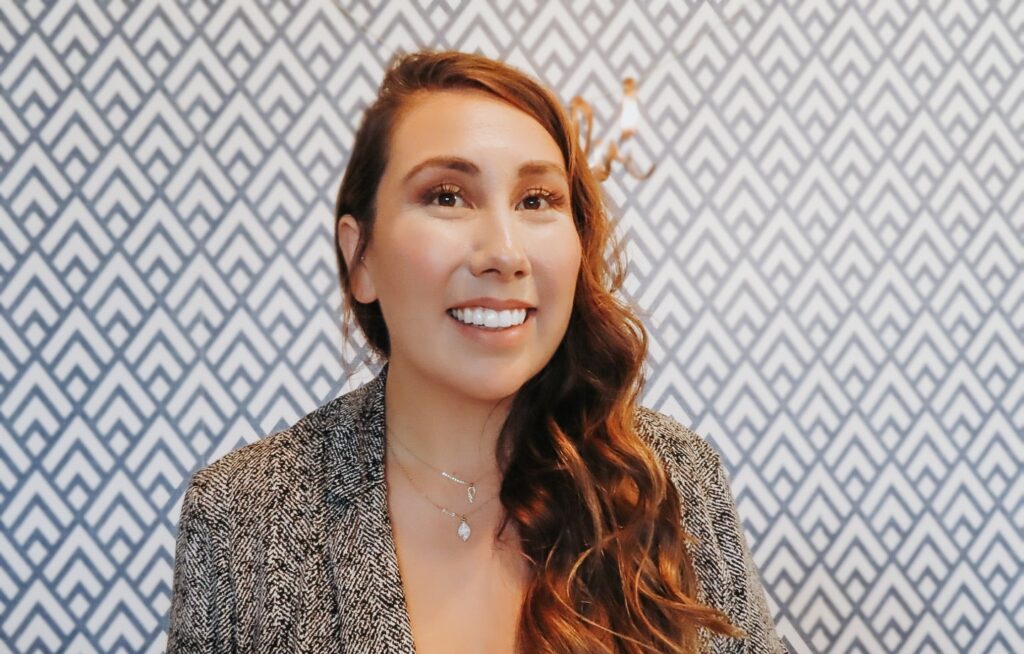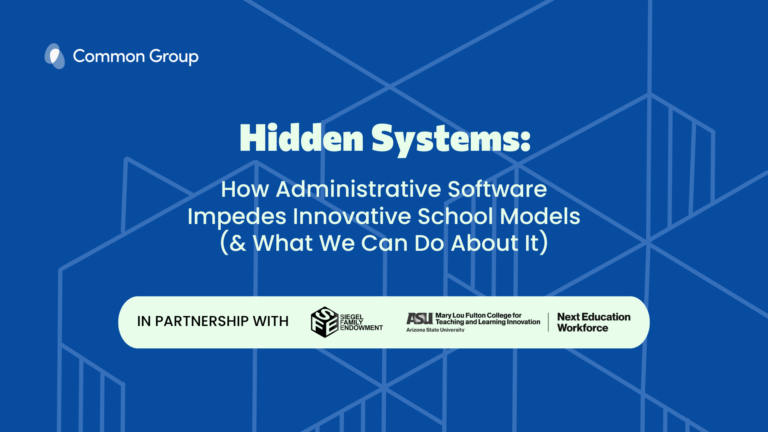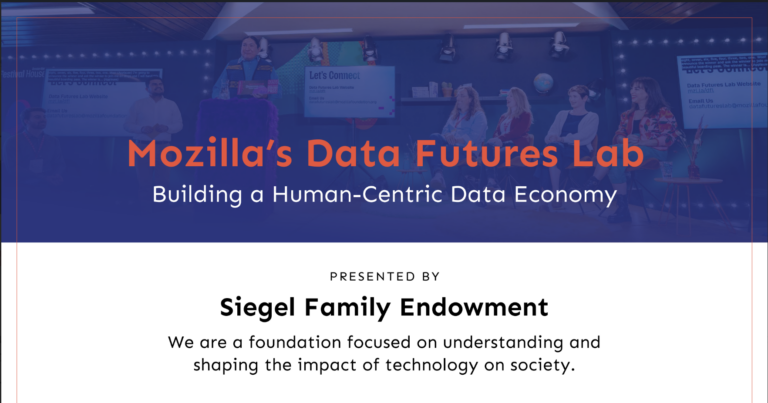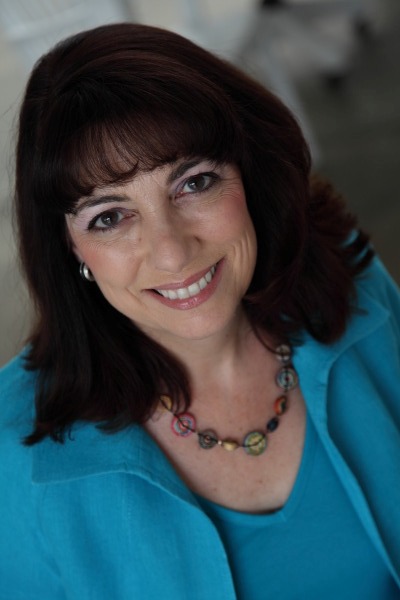Summit Public Schools’ Incoming CEO Reflects on Summit’s Path Forward on Its 20th Anniversary

When Summit Public Schools first began operations twenty years ago, few imagined that it would have the impact that it does today. It now boasts 14 schools across two states. Many schools now model their mentoring, whole child education, and real-world projects on Summit’s pioneering approach. Summit continues to develop and test new ideas and approaches in collaboration with stakeholders across the nation.
On the twentieth anniversary of Summit Public Schools, we interviewed Cady Ching, Summit’s incoming CEO. Cady currently serves as the executive director at Summit Preparatory Charter High School, the charter network’s flagship school located in Redwood City, California. In her decade with Summit Public Schools, Cady has been a teacher, mentor, school leader and network executive, as well as a parent in Summit’s local community. Cady’s leadership has been instrumental in the design of Summit’s globally recognized instructional model.
Cady’s commitment to working with educational programs in diverse communities has spanned a decade, including working on a literacy project in Hawaii; an academic and cultural summer program on the Coeur d’Alene Indian Reservation in Idaho; and a residential program teaching science to Native American high school students in South Dakota.
In our conversation, Cady reflects on Summit’s values, the role that her identity and background play in her work, how she’s been preparing for her new role, and her goals and priorities for Summit.
Throughout your career as an educator you’ve been involved in recognizing and raising the voices of diverse communities. How does this work prepare you to become the executive director and CEO of Summit Public Schools?
What all those different work experiences allowed me to do was build confidence in my collaborative and authentic leadership style.
I was raised in Hawaii, and I come from a really culturally inclusive and responsive community. Coming to California was a big change for me. I had to really be confronted with questions about my identity that I had not considered prior to leaving Hawaii. Things like, “What’s your racial/ethnic background? It’s really hard to place. Who are you?”
I was really trying to figure out how to communicate who I am to others around me. And answering that question: Should I need to communicate that to other people around me?
My first working experiences were mostly in Indigenous communities. That was what felt most natural and where I felt like I could have the biggest impact. It was very similar to the environment that I grew up in. I would go to Rapid City, South Dakota and work with Indigenous youth at a summer program there. I went to live with my aunt who’s half-Japanese, half-Native American and lives on the Coeur d’Alene reservation. I worked on diabetes prevention for youth there.
As I worked in places where I had extended family, I built confidence in understanding that it’s possible to be authentically me, be who I am, and be successful.
I think I bring all of that into my future work as a chief executive officer. It’s a commitment that I make to my organization, that all of the people throughout the organization should be able to show up as their authentic selves. True leadership comes from diversity of perspective.
How have you been involved in cultivating spaces for people to show their authentic selves at Summit Public Schools? And why is that particularly important given Summit’s mission?
It’s mission-critical for us to have a really empowered space for all of the members of our community. At Summit, one of our driving values is that every single student is known. We scale that to every piece of our network.
From the moment I entered the doors at Summit, I have been drawn to the organization’s values. As HR Director, I both understood all of the compliance and legality that the role required, but also was able to find ways to systemize those values so they showed up in practice. For example, we have processes built for every single adult to have conversations with coaches about their growth and development, and to help think about how they get from point A to point B. We are always asking, “How are we making sure that we let every single person who we work with feel truly known and invested in and developed?” That commitment to putting our values into action is very special. It doesn’t exist in a systematized way in many organizations.
One of Summit’s values is to be a part of the community and to recognize the whole child. What does that look like?
To give a concrete example, we have very dynamic classrooms where the teacher is the facilitator and students are taking leadership and ownership over their learning and work. I say to students every single day, “We’re not a school in a community. We’re a school within a community.”
How do we do that work of being a thoughtful contributing member of society? I hired one of our incredible alumni to build a database of all the talented mentors that Summit Prep students know. For example, one student has an uncle who owns a boxing gym, and invited students to go after school. Now this year we have an Expeditions program where students are going during the day to his gym and boxing during the day, because they’ve picked up this passion for the sport.
Another example is that we have a group of kids that participate in leadership coaching at our local Boys and Girls Club during Expeditions to incubate leadership ideas for change in their community. Students present their change ideas to adults on campus for feedback and support scaling and implementing change.
It’s really collaborative to have people in our community know our kids and have our kids feel empowered and successful. At Summit, we feel we are truly living alongside and fully integrated into the communities that surround us.
How does this type of leadership experience at the school-level translate into your new role as CEO of Summit Public Schools?
All of my roles at Summit have felt like leadership roles. It’s because of the way we make folks feel deeply valued and connected to the work. The biggest difference for me when I switched from being a teacher leader to a school leader was the scale and the magnitude of my impact.
What being a school leader allowed me to do was to think about how I, as my whole person, show up in that role. What does it look like for me to lead a community?
For example, as a school leader, I instituted a mentor group leadership team. There is representation from each mentor group. We meet once a week to talk about the state of our school and sometimes the larger network. We use processes like fishbones to deep-dive issues on campus. The fishbone process is designed for use in investigating and categorizing the many root causes of inequitable outcomes in our systems so that a team can develop a collective understanding of the problem and identify high-leverage areas for improvement.
I explicitly teach young people tools for advocacy in a way that will put them ahead so that they can navigate systems after high school too. This is one example of a structure truly designed at the site-level to achieve our mission and vision while honoring my cultural perspectives and values of collective leadership. At the CEO level, I will continue to help collaboratively design systems that honor the collective.
What impact have you seen from your leadership values and your approach to collective leadership overall? How has your approach worked to address some of the challenges that we’ve seen in school communities during the pandemic?
During the pandemic our context rapidly and unexpectedly changed. Our student demographics, our communities themselves, our teaching forces—the environment that our schools exist within have all changed.
While we don’t have a magic solution to everything, we have strong values and brave spaces to discuss challenges. We have piloted new leadership structures designed to have more diverse perspectives in decision-making spaces. As a network, systems leaders (including all of our school site executive directors) now meet once a week to discuss priorities and generate ideas to address complex challenges. We have also spent this year doing a pilot where experienced executive directors coach their peers who are newer to their roles. We find that the executive directors are most proximate to the work and that this creates a more empowered network. These system examples show the way we are paving a path for collective leadership.
With our teaching faculties specifically, we continue to be committed to listening to teachers about their experiences. We reached consensus at the end of last year on what we believe are foundational practices in our classrooms, and we aligned on what transparent coaching and support should look like. I know how important it is for teachers to feel empowered and validated. We have taken significant time in the past few years to figure out how we all move towards our mission and our vision in a way that feels sustainable. It is my hope that the time and resources teachers and leaders have invested here lead to increased teacher retention.
I spend a lot of time thinking about how we continue to find people who feel energized by our mission and our vision, and who see their work as part of who they are. That’s how I feel about my work at Summit. We try to build our own teacher pipelines, and actively try to improve our schools in response to what all community members share with us. At Summit, we have such a clear mission, vision, set of pedagogical practices, skills, habits, and values. We know who we are, and it’s about identifying folks who have similar values.
How did you decide to take the next step in your leadership journey, to apply to become CEO of Summit Public Schools?
Diane Tavenner, [Summit Public Schools’ founding CEO] has been unknowingly getting me ready to be the CEO for ten years. She treats every single leader in her organization with love and care, and tremendous opportunity for development and growth. Even before I knew I would apply to be the CEO, I felt like I had been developed in a way that was personalized to me. That is so special about the way we treat leadership in our organization.
To give an example, when I was deciding whether or not to apply for CEO, I had a one-on-one conversation with Diane, where she didn’t push me either way. She said, “These are the things that I know to be true about you.” She talked about my family, my values and she talked about me as a mom of a little one. Diane helped me to think through pieces of my identity, and asked me guiding questions that helped me arrive at my next step in a way that felt really empowering.
Diane made it clear that it was my decision. I decided to apply to be the CEO. Through the application process, I had that conviction and confidence. Following this conversation, parts of the CEO application involved leaders across the organization giving feedback on my vision for the network. The process also involved my colleagues sharing about who they felt inspired by, who they wanted to work for, who was most authentic to their being. I was honored by how I was ranked in this process by my colleagues. It helped to stamp my leadership abilities. When the board announced me as the next CEO, what shifted was that we were no longer talking about an idea of what my next step could be. I had arrived at it.
How have you been preparing to become CEO of Summit Public Schools?
One of the things Diane said to me multiple times is that she feels tremendous responsibility to me as a young, multicultural woman from humble beginnings. She is committed to making sure she spends this year setting me up for success, and she spends every day following through on that promise.
I have been included in so many leadership spaces. What I love about Diane’s coaching is that she focuses on specific skills, not just particular content. That’s the same way that we believe young people should learn. We also apply it to adults. Diane didn’t start with content lectures about government affairs and other topics that I was less familiar with. Instead, she started with helping me learn strategy at the network level. She lets me watch her take meetings. She and I co-lead many meetings. She introduces me to trusted thought partners. She listens to me discuss how I would approach something and give me honest and actionable feedback. She trusts me to lead. As a collective experience this has allowed me to develop deeper relationships with more folks across the network as well as externally.
What does it mean for someone who comes from those beginnings and who has the background that you have to assume leadership of Summit Public Schools?
I love that we chose a community leader, someone who has been in the community and worked in the community. Because of my identity and personal story, I’m able to connect with students in a way that I think is really powerful. I am inspired and energized to be in this space, together with an entire network of compelling adults committed to high quality experiences where every single day, young people, like I once was, can find success in the things they want to be true for themselves.
Representation is so important to me. One whole branch of my work at the South Pacific Islander Organization, [a nonprofit offering free digital educational resources to Pacific Islanders to increase Pacific Islander presence in higher education] which I co-founded, was about representation and how powerful it is for young people to see themselves and professional communities that they are interested and passionate about. I feel immense responsibility to our communities.
I also feel so much pride. Because we have always built our network composed of people who are aligned to our values, it created this perfect storm of opportunities over a decade that brought me here. I’m here because of the people along the way trusted and believed in me.
What goals and priorities do you have as you take the helm at Summit Public Schools? And what challenges do you anticipate you’ll need to tackle?
Over the past 20 years we got something done that seemed nearly impossible. We’ve been known for our whole child work, and that had an enormous impact on students, and on alumni. We’ve built a network of folks in our work that are a guiding coalition for the work.
What we’ve seen is that our context has changed so rapidly and unexpectedly. We’ve seen pressure points in our model that have created dips in our enrollment and opportunities for an evolved program. Looking forward, we really need to have a flexible model that can adapt to the changes in the context around us. We have an opportunity to be innovative and to learn about what we’ve built over the past 20 years as we lead our organization into the future.
My vision for our schools in the next many years is that we’re operating excellent schools that are laser-focused on what makes us distinct. In addition to our core academic offerings, the parts of our program that you’ll see us really investing resources into in the next few years are mentoring (which has always been a pillar to our work and something that we are known for being world-class in delivering), our Concrete Next Step work, and our Expeditions program. Those take our whole child approach further by providing multiple pathways to post-high school life that reflect students’ passions. All our students will continue to be college-ready, but they will have additional options as well.
Do you expect to extend this model beyond the schools that you operate as part of Summit Public Schools?
For the past few years, during the pandemic, we’ve been really internally focused on just making sure our kids are okay. We operate mostly Title I schools. We were looking for grants to help families back pay rent. We were investing in mental health supports. Now we’re in a spot where things are starting to stabilize. We are no longer in crisis- and we are ready and able to move into the future.
As we engage in that work, we are at a place where we want to continue to showcase how incredible our model continues to be. So we are doing a lot of work right now to film testimonials with students, to do more interviews, and to figure out where the pockets of folks are who are interested in the same things as we are for young people.
Something I think about a lot is how to build the capacity in our network to pilot change ideas. We want to incubate change ideas. We have research to support directionality to those ideas. We have incredibly smart people—including the young people that we serve—to pilot these ideas. What does it look like to scale those ideas across context? When will we know that it’s ready for scale?
We welcome the opportunity to partner with educators, researchers, and philanthropists as we explore, develop, and scale innovative and sustainable change ideas that impact and address the inequities in education.
In March you’ll be meeting with a group of education leaders from Summit’s extended network to brainstorm ideas as part of Summit’s 20th anniversary. What are your hopes for those conversations?
One of the things we’re really good at is being brave in the public education space. We learn how to navigate systems and aren’t afraid to change and redesign them. Part of this work requires rigorous collaboration. We never want to work in isolation. We believe in sharing our ideas and findings- and we want to make connections. We believe that divergent perspectives and courageous conversations make us stronger and want to actively create spaces for conversations to drive toward equitable experiences for youth.
I think that we sometimes don’t put enough emphasis on the broader network of people who have shared values at a national level, because it’s so easy in education to feel like you’re alone. One of the things that has helped me to feel sustained and empowered is in the spaces where I feel seen and validated. My hope for everybody who attends our event is that they are able to feel seen and to focus on our collective work in a way that re-energizes everybody to keep moving forward.
####
Cady Ching will become the executive director and CEO of Summit Public Schools on July 1, 2023. She currently serves as executive director at Summit Preparatory Charter High School, the flagship school in the Summit Public Schools network, a nationally-recognized nonprofit that operates public middle and high schools in California and Washington.
Learn more about Summit Public Schools here.





